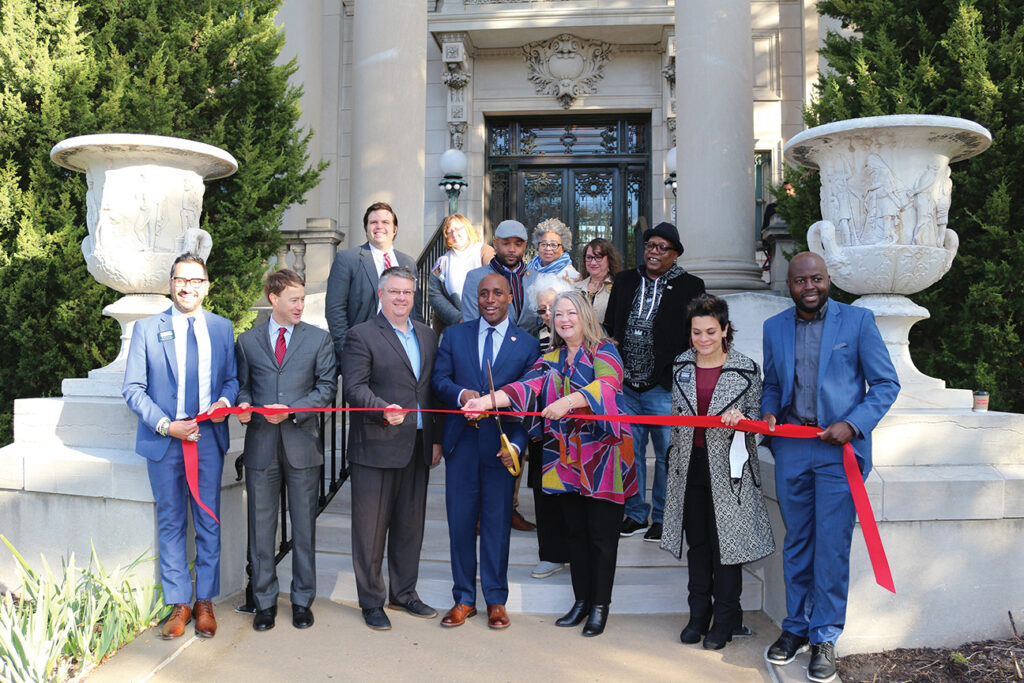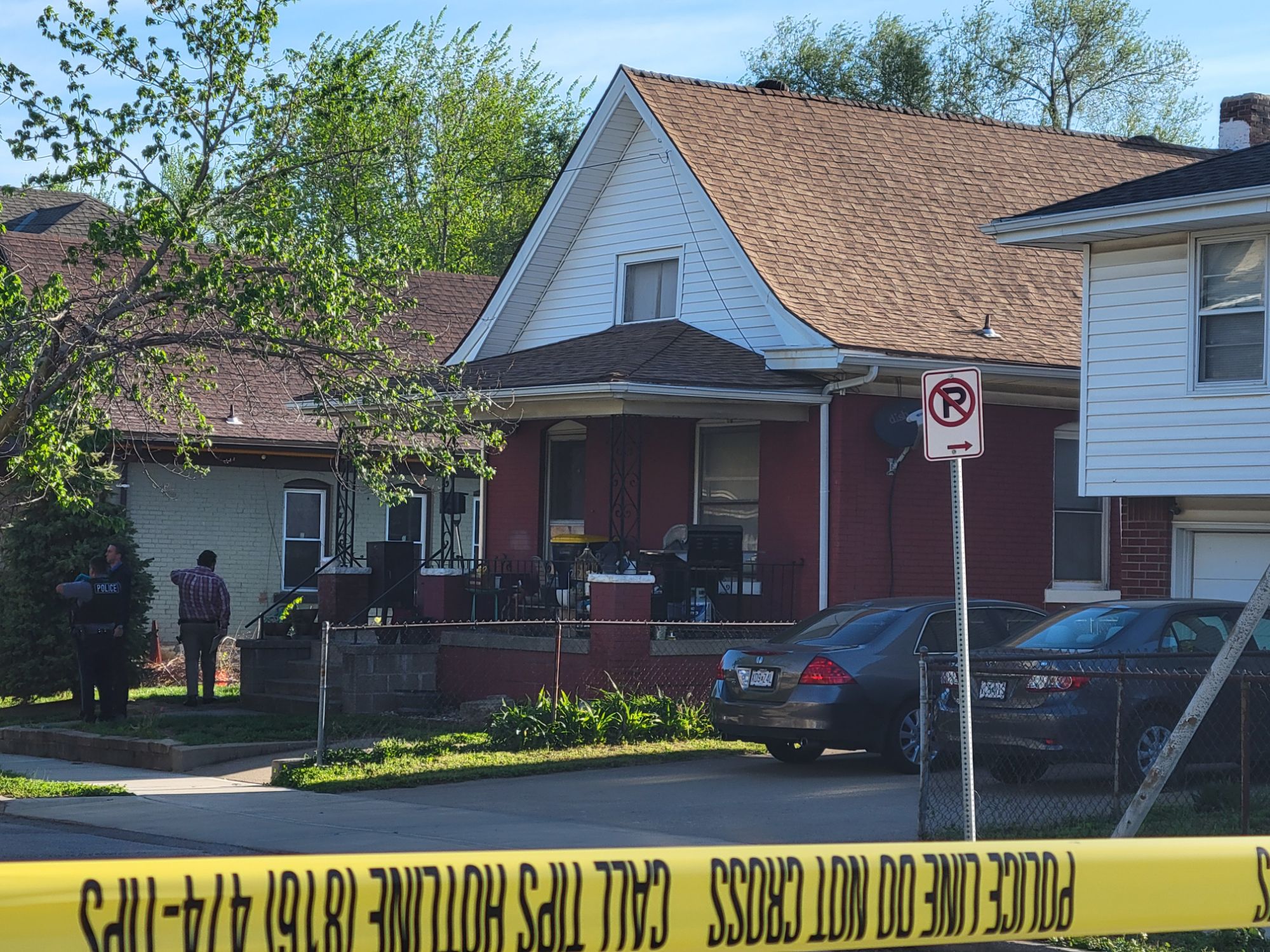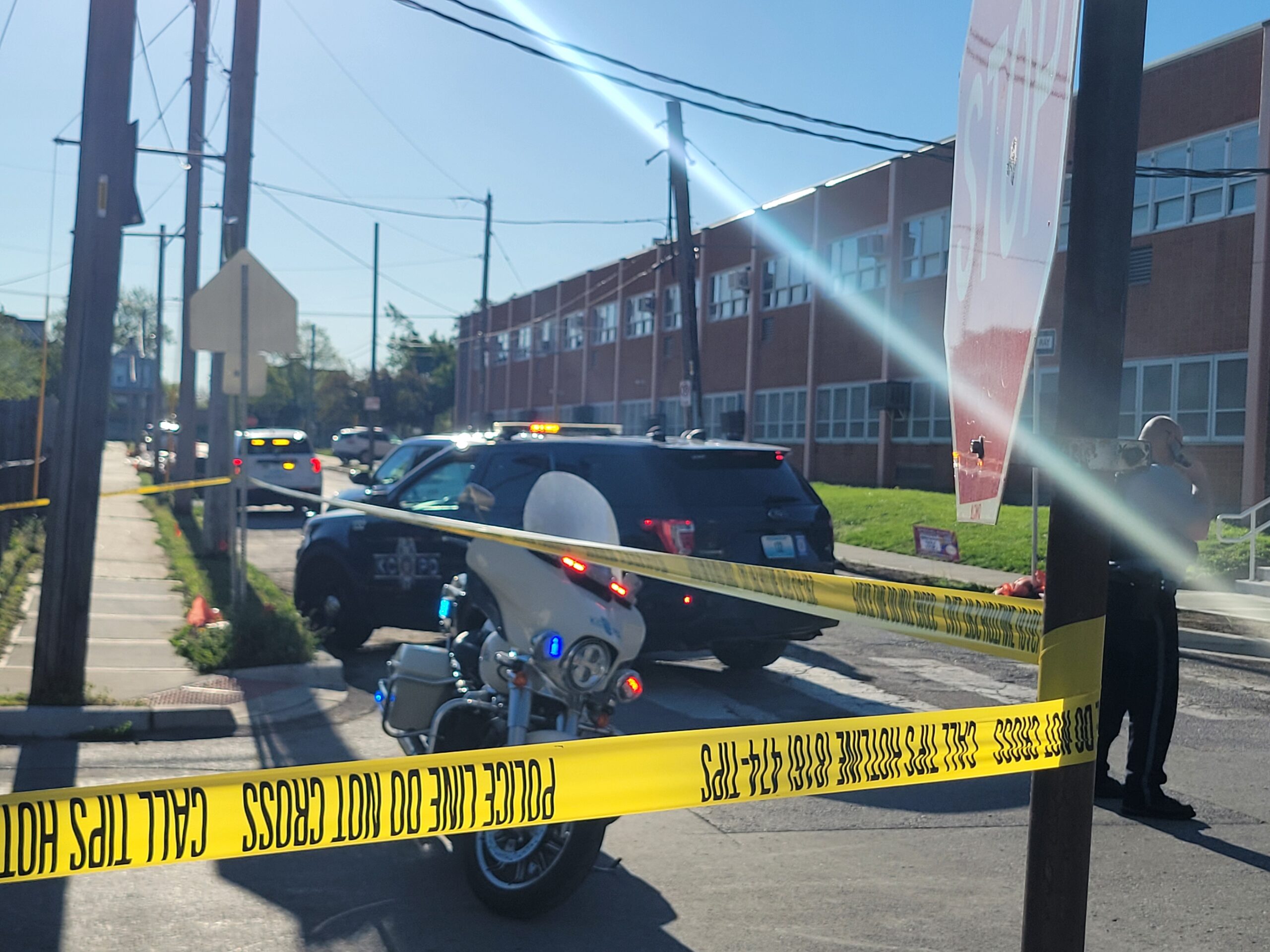
Abby Hoover
Managing Editor
The Kansas City Museum is once again open to visitors as the new museum of Kansas City history and cultural heritage, following a $22 million restoration and renovation.
The historic Corinthian Hall, built in 1910 by lumber baron Robert A. Long at 3218 Gladstone Blvd., has been closed since 2017. The 70-room mansion itself is an artifact, built in the Beaux-Arts style, and has been home to the Museum since its initial opening to the public in 1940.
Public funding for Stage I of Corinthian Hall Construction was provided by the Museum Mill Levy, and $8 million in GO KC Bonds, as approved by voters on April 4, 2017. Additionally, the Kansas City Museum Foundation, which took control of museum operations in May of this year, raised private funds through the Making A Museum KC campaign to create the history- and humanities-based exhibitions for Corinthian Hall.
“I am overwhelmed with excitement, with joy, with gratitude, thankful to the entire Kansas City community, thankful for this team, certainly, but the teams that came before us, all the work that was done up to 2014 when Parks took over, and then all the work that we advanced thereafter,” KCM Director Anna Marie Tutera said. “I’m really, really honored and proud of this moment. People like Ruth Anne Harper, Rita Nell-Patejdl, Deb Hermann and others who absolutely fought and advocated – women, I might add – who fought and advocated for the museum to be what it is today. I think they’d be very proud of us.”
Anticipation has been building throughout the past year for the grand reopening of Historic Northeast Kansas City’s crown jewel as neighbors, stakeholders, supporters and history lovers have gotten sneak peeks of the progress at recent events like the museum’s annual Derby Party, and a preview tour for Northeast residents.
“I hope that people walk away with a couple of things – number one, learning something about Kansas City history that they didn’t know before,” Tutera said. “Feeling represented, that their race, ethnicity, culture and community is represented in this experience – and if it isn’t, that they come and talk to us so that we can work on that together – and that people feel inspired to be more engaged citizens in Kansas City.”
Glenn North, Director of Inclusive Learning and Creative Impact, acknowledged that the land the Kansas City Museum stands on is occupied territory and the ancestral home of the American Indian, Indigenous and First Nations people, who inhabited the Kansas City region long before European settlers arrived.
“We stand against the violence of cultural erasure and therefore commit to continuing to learn their stories and to follow their example by being better stewards of the land we reside upon,” North said. “We seek to fulfil our mission to preserve, interpret and celebrate Kansas City through collections, exhibitions and bold programs that reflect Kansas City’s evolution in spirit, and to engage visitors in unfolding stories about Kansas City’s vibrant history, cultural heritage and pride.”
Scott Wagner, Board of Parks and Recreation Commissioner and Director of Northeast Alliance Together, is also a former member of the City Council who advocated for the project, but was involved years prior.
“Time moves on, and to bring this facility back – in many respects, it started back around 2005 – there are people who are not here today that started a ball rolling that ends with what we’re doing today,” Wagner said, mentioning those who advocated for the museum as it declined.
Without the City Council, the Park Board who ran the facility from 2014 to 2021, the Kansas City Museum Foundation, the GO Bond and privately raised funds, this wouldn’t have happened, Wagner said.
“Without the leadership of Mary Davidson, present Foundation president, and Anna Marie Tutera, the guiding light to get us here today – I sometimes wondered how she did it, then I decided to quit asking questions and be very thankful for what she did – but she and her staff have brought us here today,” Wagner said.
Mayor Quinton Lucas noted that many Kansas Citians have amazing memories of the old Kansas City Museum, including himself, but he’s very excited about the future. For years, they’ve talked about what the museum could be.
“We’ll see elements of what it could be today, but the real excitement is when we start to see people in here, when we get to hear stories from people from communities throughout our region who are saying, ‘This conjures memories for us,’ when we start to see so many folks interacting once again and where we in Kansas City have a museum – we have lots of wonderful ones – but where we have a museum that’s dedicated to telling so many of the stories of Kansas City and Kansas Citians – and in so many situations, Kansas Citians who didn’t always have a voice – that is powerful, exciting, dynamic and amazing,” Lucas said.
Lucas was a councilman who voted for it, but said it’s people like Tutera, the people of the Northeast neighborhoods, Scott Wagner, and so many more that made the big difference.
“It’s a huge deal for the community and for the region,” Lucas said. “It took a lot of work, and look, I’m just lucky enough to be mayor here,” Lucas said. “We’ve got one of the most beautiful facilities in America right now, dedicated to the city itself. You don’t go to a lot of places and see that – with respect to everybody else – people have music museums, art museums, but they ain’t got something like this, and this is going to be real special for Kansas City.”
There are lots of cities of comparable size that don’t commit to culture, to parks, to recreation, to the arts, like Kansas City does, Lucas said, thanking the Board of Parks and Recreation Commissioners.
Admission to the museum is free, but timed entry tickets are required. More information on tours and tickets can be found at kansascitymuseum.org.
For Stage I, International Architects Atelier is the lead, primary architectural design and planning firm, and JE Dunn Construction Co. is the Construction Manager.
The timeline for Stages II & III has yet to be determined. They will include the future restoration and renovation of the remaining buildings and grounds on the property. Each stage will open to the public upon completion. Remaining buildings include the Carriage House, Horse Trainer’s Home, Carpenter’s Shed, and Conservatory – which became a planetarium in the early 1950s. The grounds include the Pergola, Paddock Area, and Perimeter Fence and Gates. More about future stages can be found at makingamuseumkc.org.


















